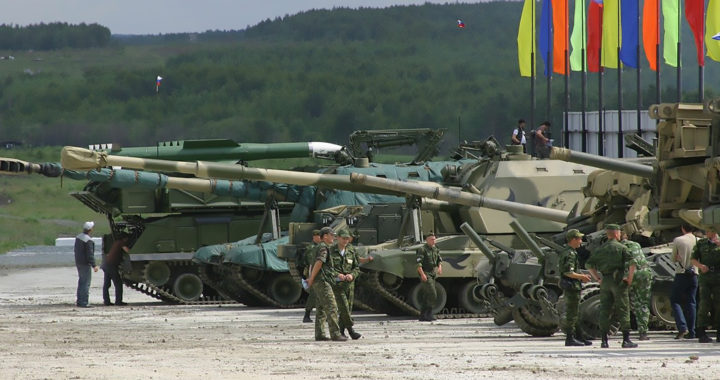The Armed Forces of the Russian Federation or the Russian military is one of the largest and strongest in the world. Details about its exact military capabilities have resurfaced following the ongoing Russia-Ukraine conflict that started in 2014 and the invasion of Ukrainian territories that included the annexation of Crimea in February 2014 and the recent attacks on Ukrainian soil that commenced in February 2022.
Note that Russia is a military superpower. Other superpowers include the United States, China, the United Kingdom, Germany, France, Japan, and South Korea. This article provides an overview of the strength of the Russian military in terms of the size of its armed forces and its fleet of military vehicles, the military hardware or weaponries and other assets at its disposal, and its technological capabilities.
Important Facts About the Strength of the Russian Military
• Number of Personnel: Russia has the fifth largest military personnel in the world with close to 1 million active-service personnel and 2 million reserve personnel. It is also mandatory for Russian citizens aged 18 to 27 to serve in the military for a year. For comparison, the United States has more than 1 million active-service personnel while China has more than 2 million.
• Military Vehicles: The Russian Armed Forces also owns and maintains vehicles for land, naval, and aerial operations. It has around 12500 tanks and 30000 armored vehicles, 600 naval vessels and 70 submarines, and 1172 combat-capable aircraft that include fighter jets, missile carriers or bombers, and assault helicopters.
• Non-WMD Weaponries: It also has an expansive list of military hardware that ranges from munitions for numerous small firearms to 14000 artillery guns that can be transported using land-based vehicles or to other continents using naval vessels and aircraft. The country maintains an inventory of offensive and defensive grenades and rockets and other tactical weapons.
• Advanced Weapon Technologies: Russia has been known for producing and using weapons with a wider area of effect. These include thermobaric weapons or vacuum bombs, which are capable of generating a fireball within their respective blast radius, and cluster munitions, which are bombs that have outer shells that contain submunitions for defensive and tactical purposes.
• Nuclear Weapons. Part of the strength of the Russian military is its nuclear assets. It owns more than half of all of the documented nuclear weapons in the world with 4497 strategic nuclear warheads and another 1458 strategic deployed nuclear warheads. The Armed Forces of Russia can launch these weapons on intercontinental ballistic missiles, ground bases, submarines, and aircraft bombers.
• Defense Industry: The country also has a dedicated and thriving defense industry that has been considered the largest employer of the Russian population. This industry can produce its own weapons and munitions, military vehicles ranging from tanks and armored vehicles to naval vessels such as ships and submarines and military aircraft for combat and transportation purposes.
• Other Weapons at Disposal: Analysts and other international actors have noted that the Russian government has the capability to develop and deploy biological and chemical weapons. Furthermore, it has also weaponized its digital infrastructure to launch cyberwarfare against target countries and institutions.
• Military Budget: The total military expenditures of Russia in 2020 represented 4.1 percent of its gross domestic product, and it also represented 3.1 percent of global military spending. The country is the fifth biggest military spender in the world with around USD 60 billion in budget. The U.S. has a budget of around USD 700 billion while the United Kingdom has around USD 55 billion.





